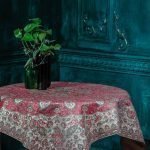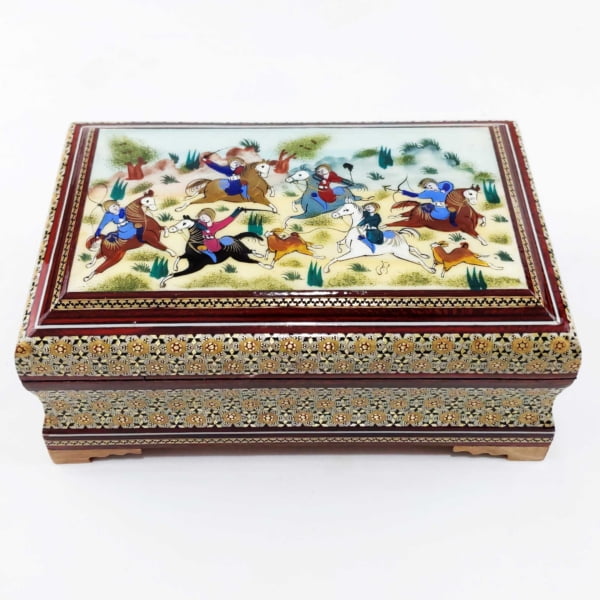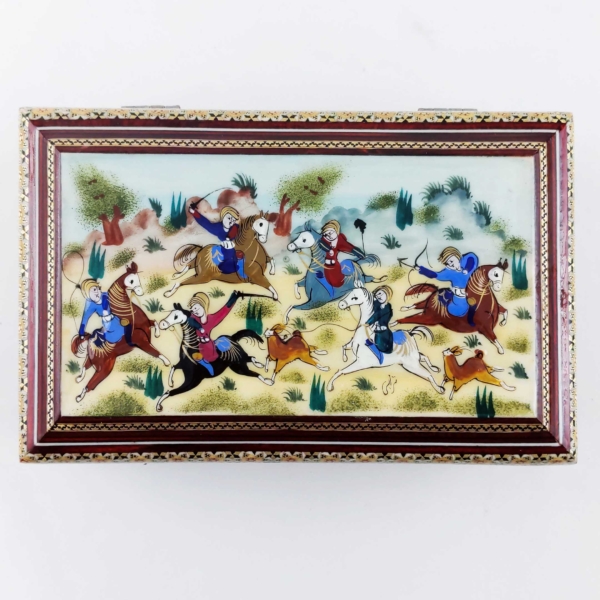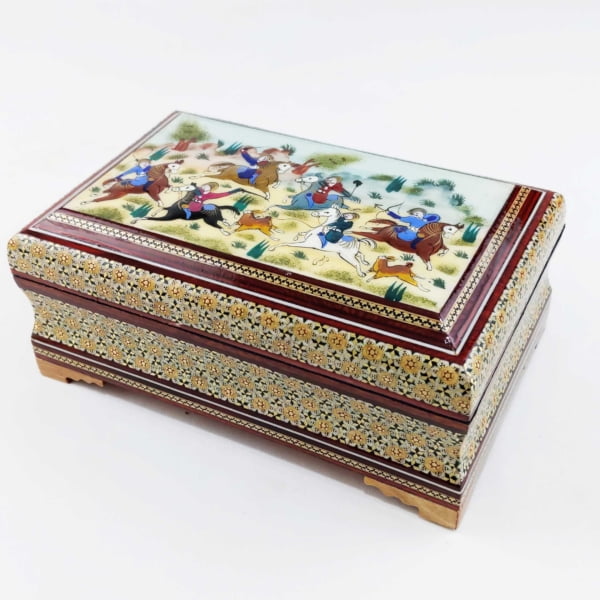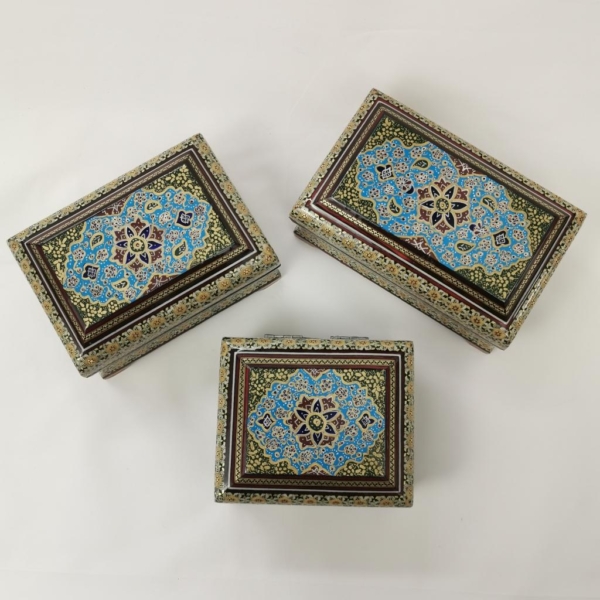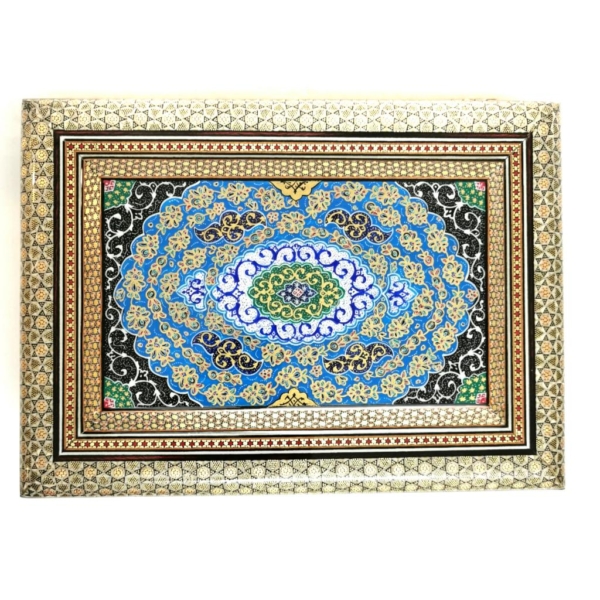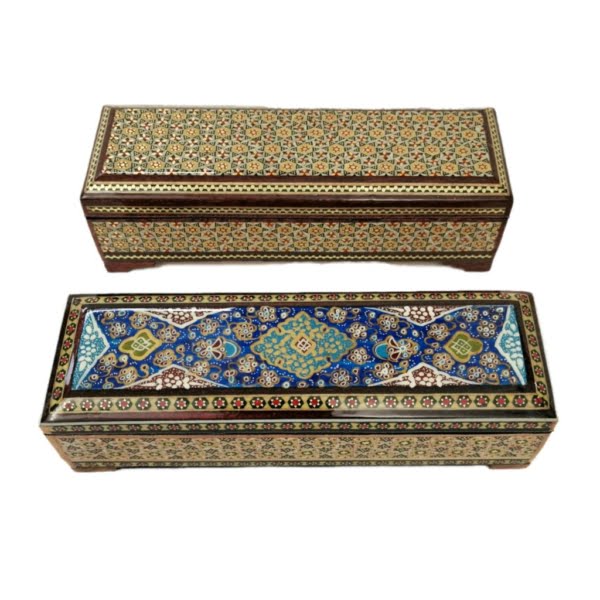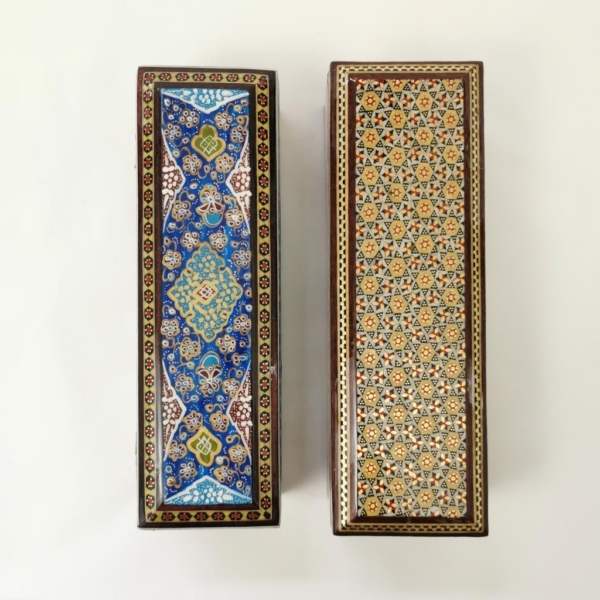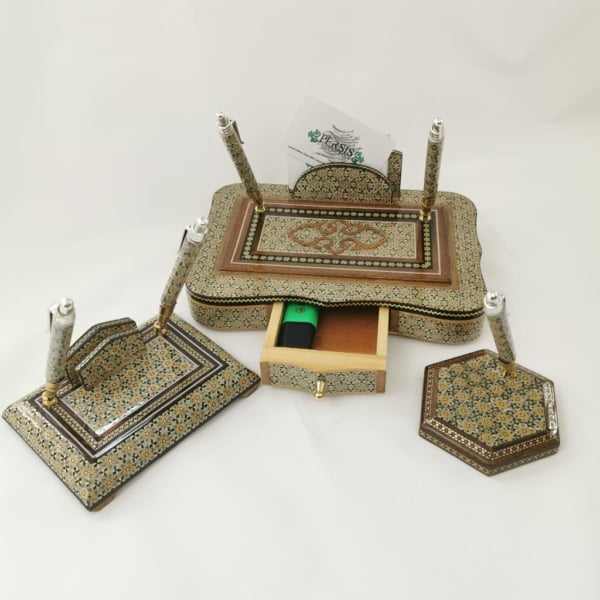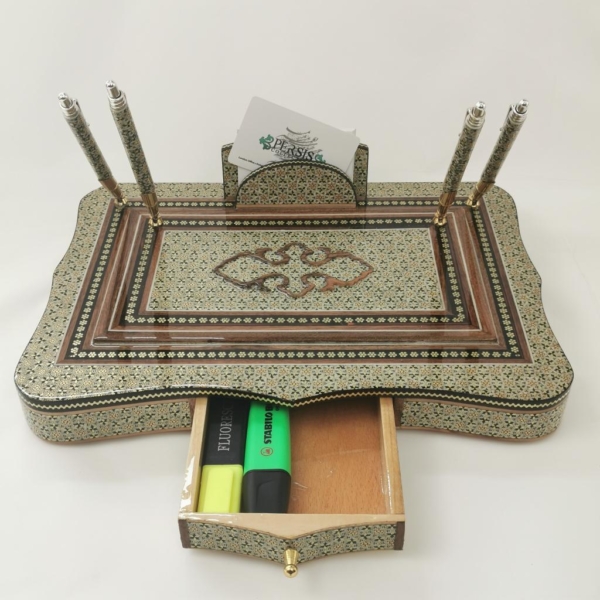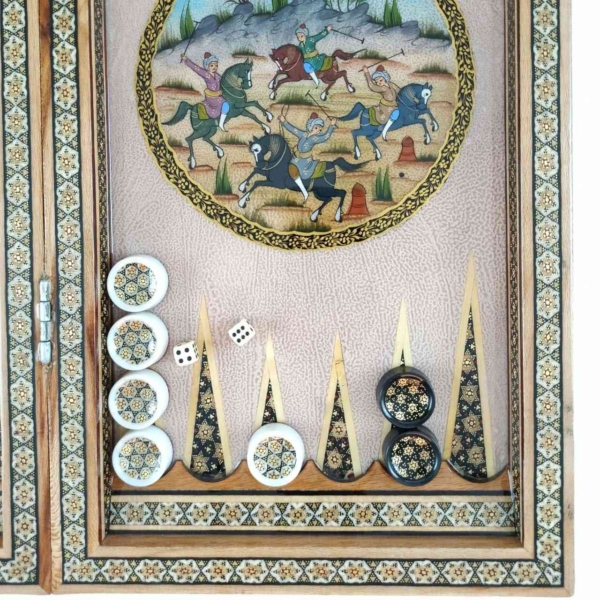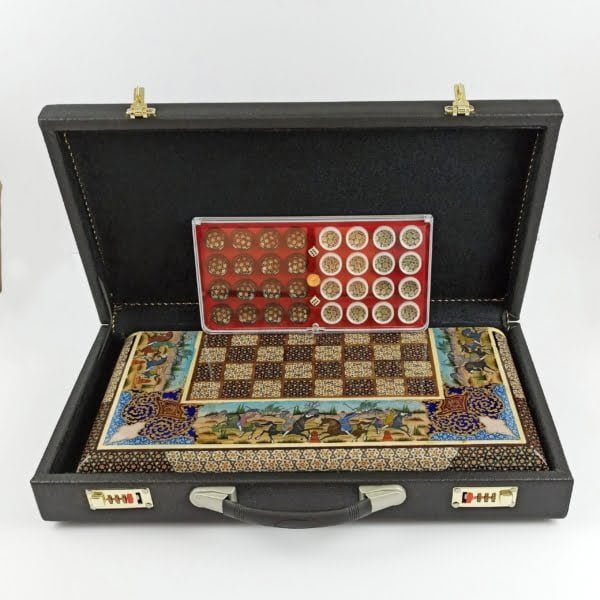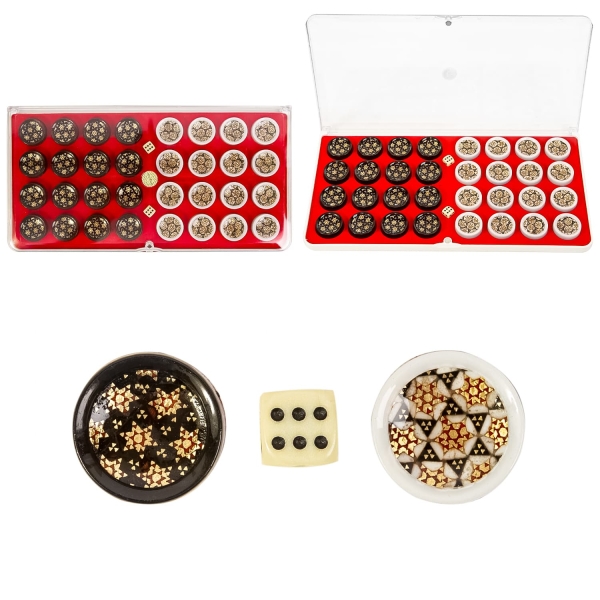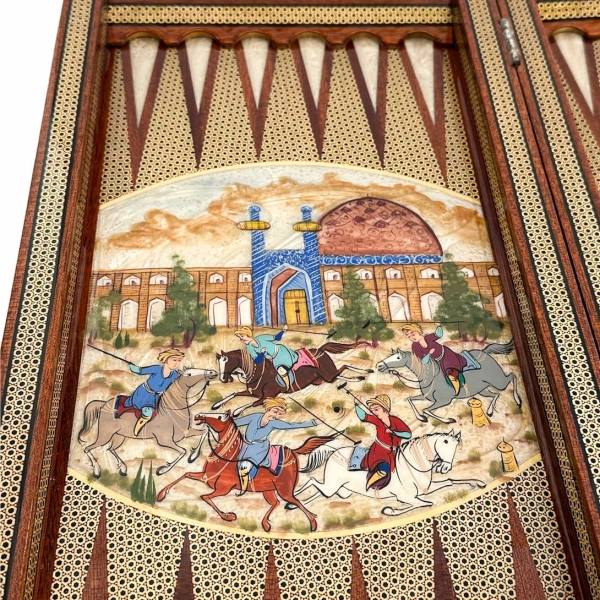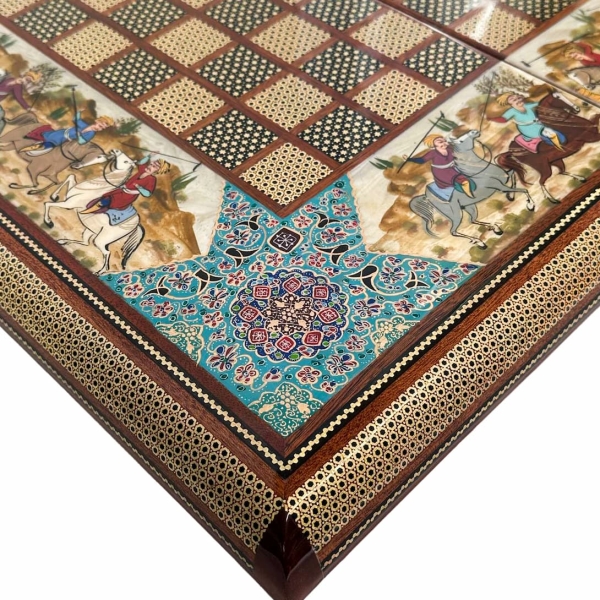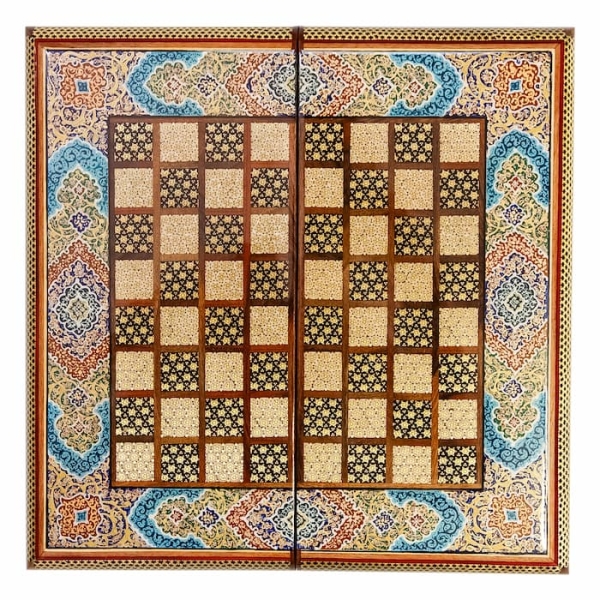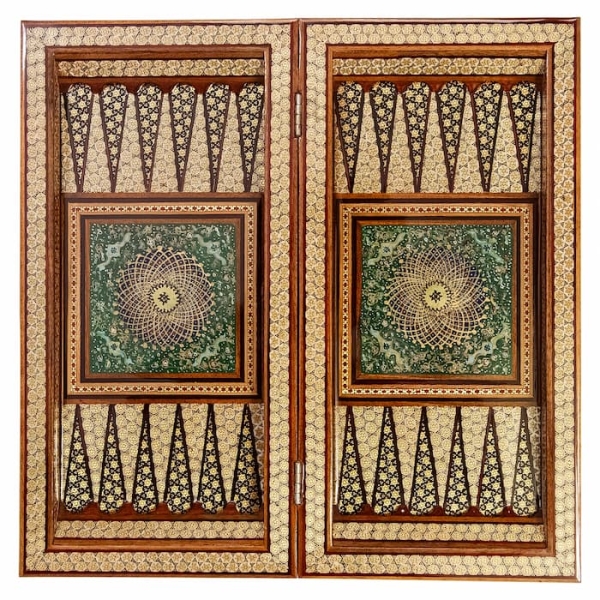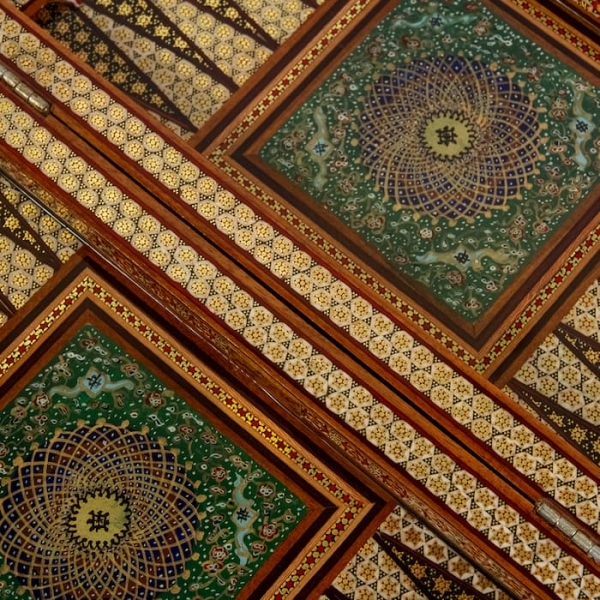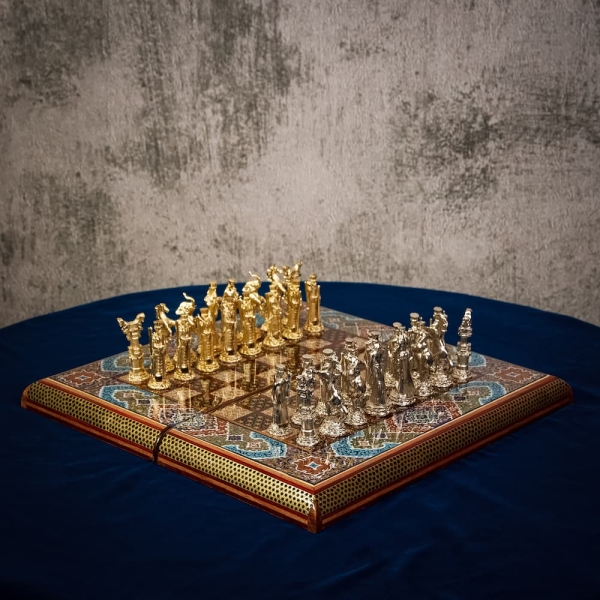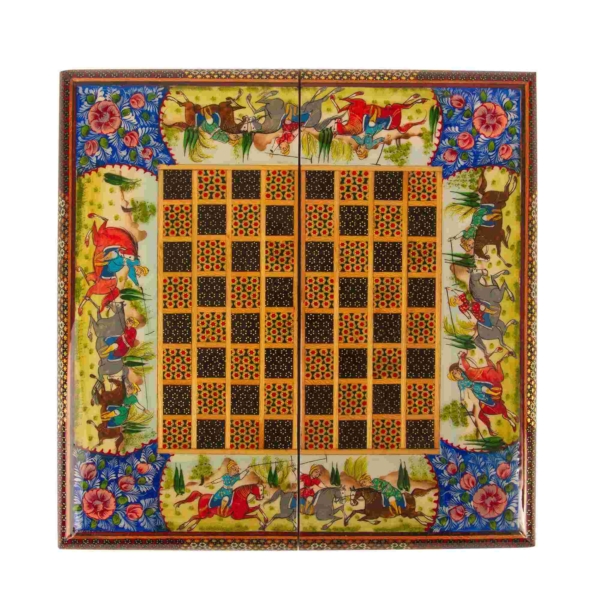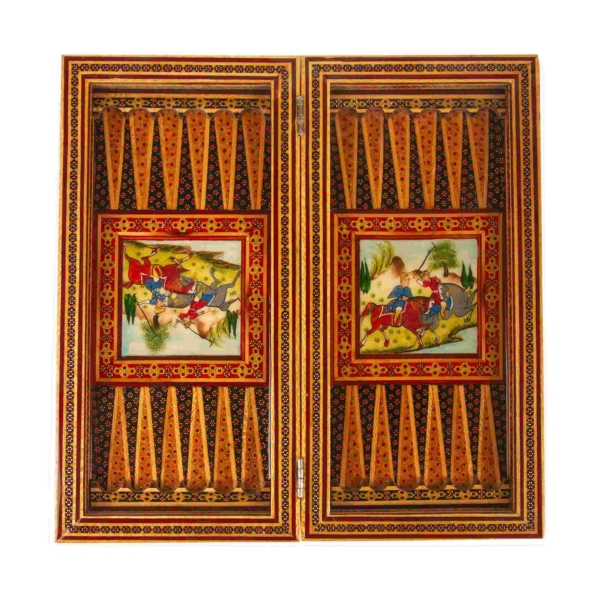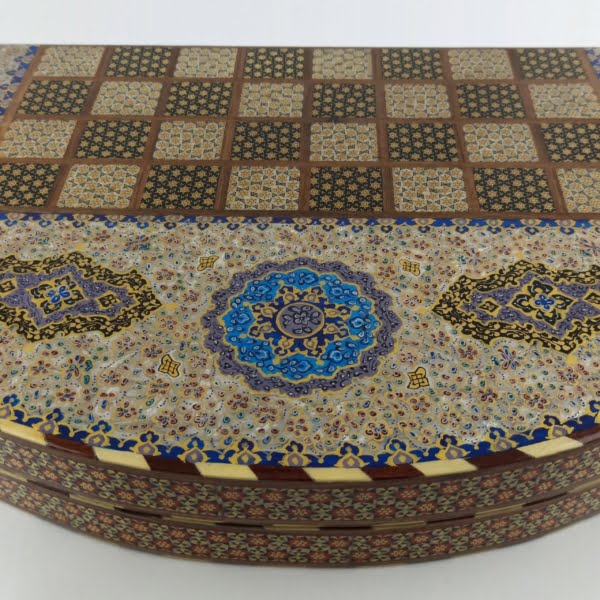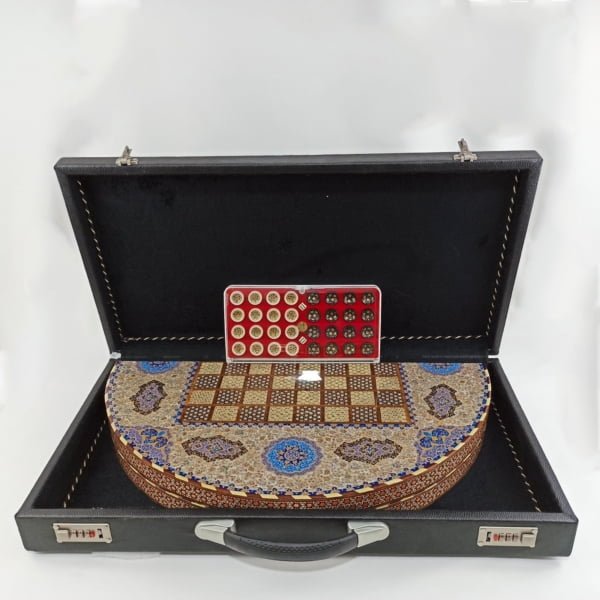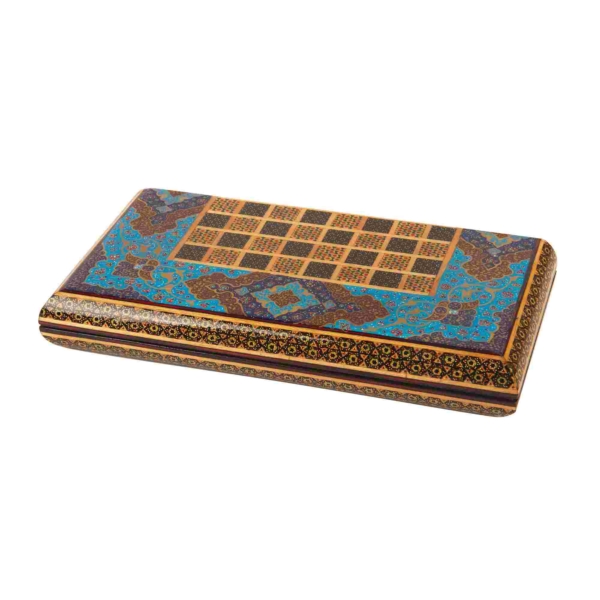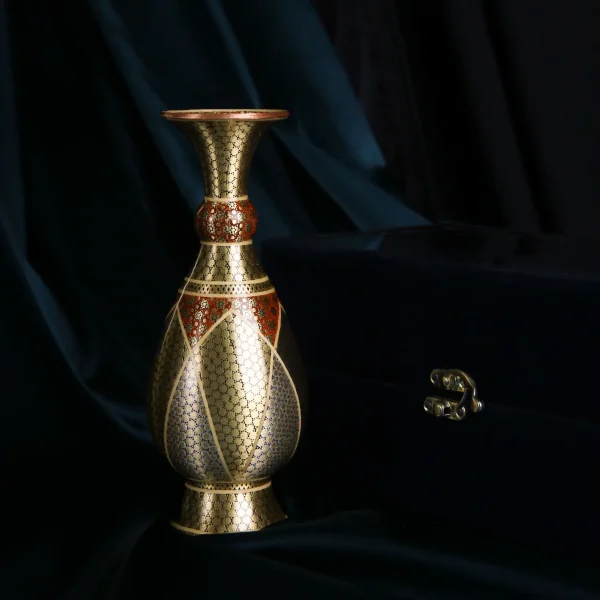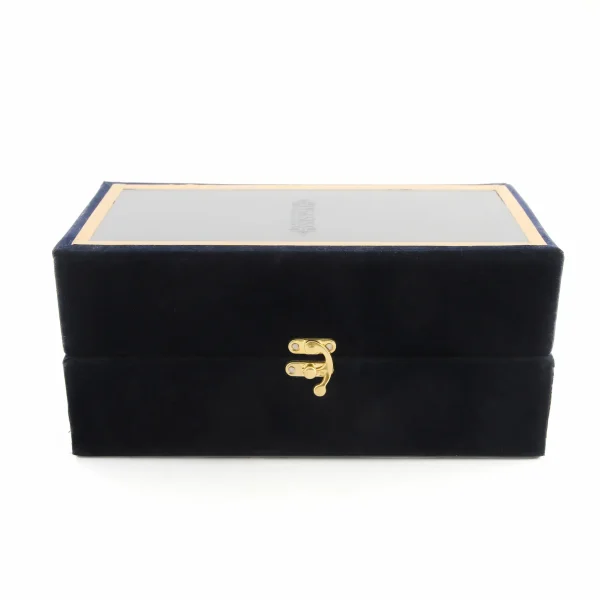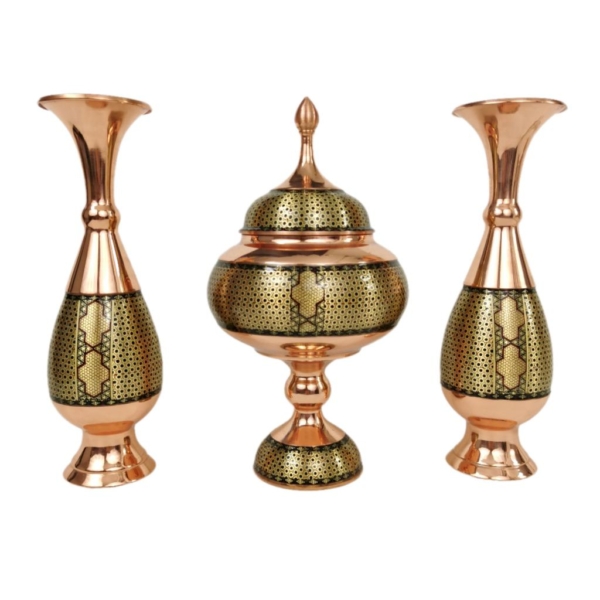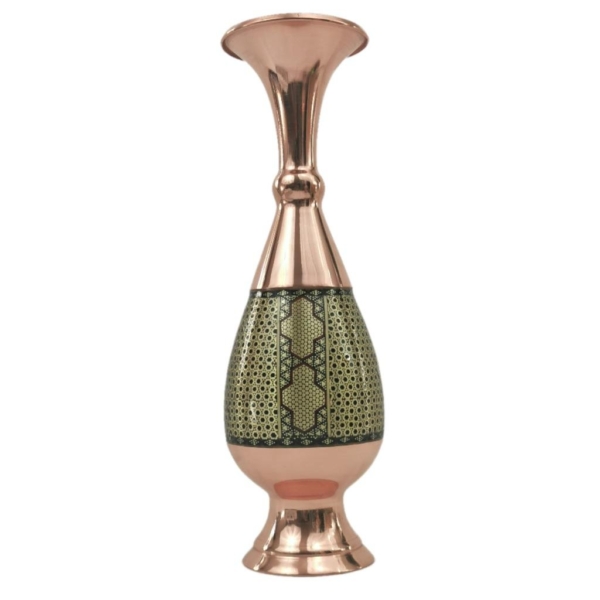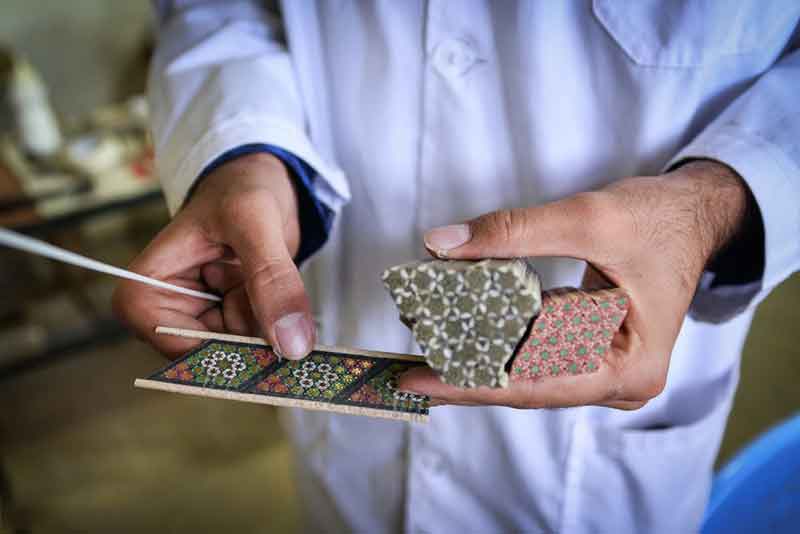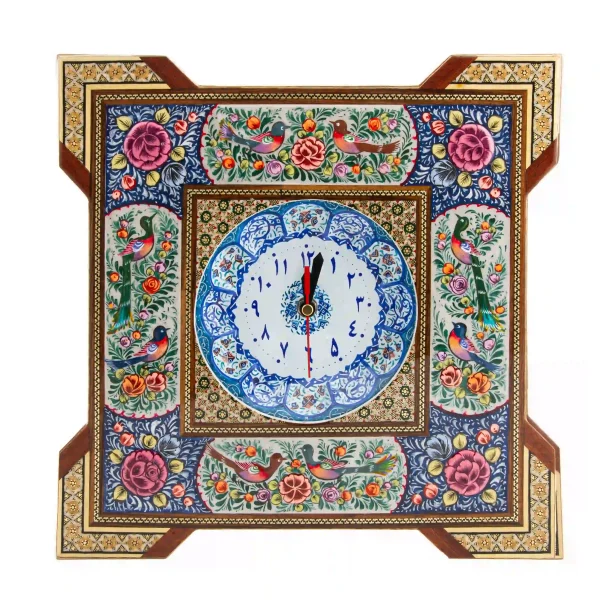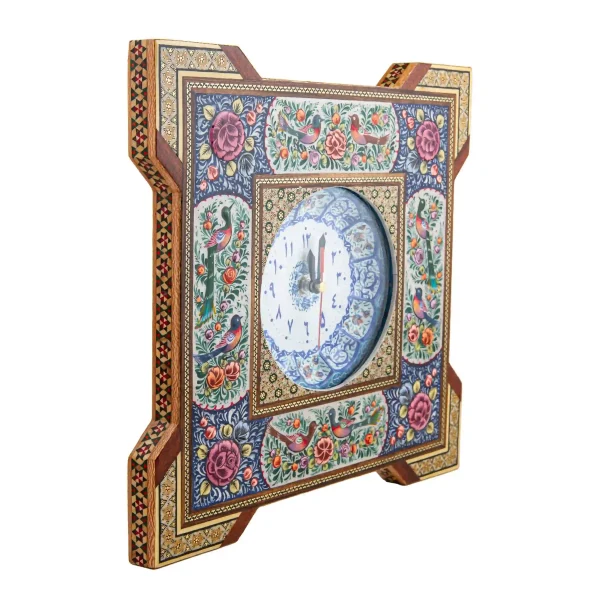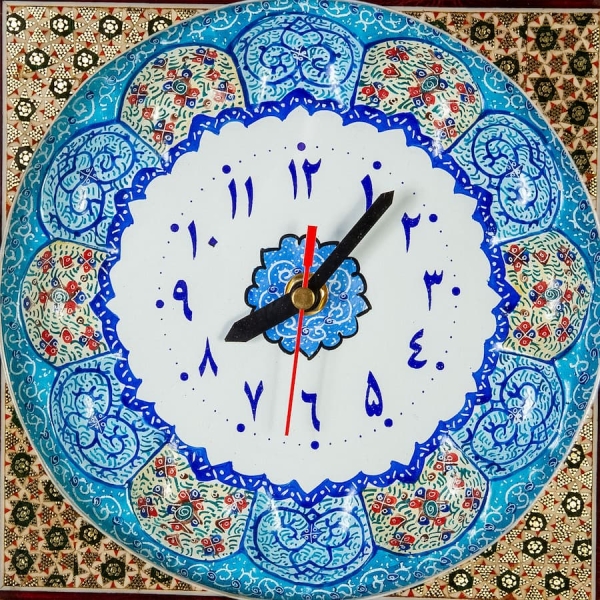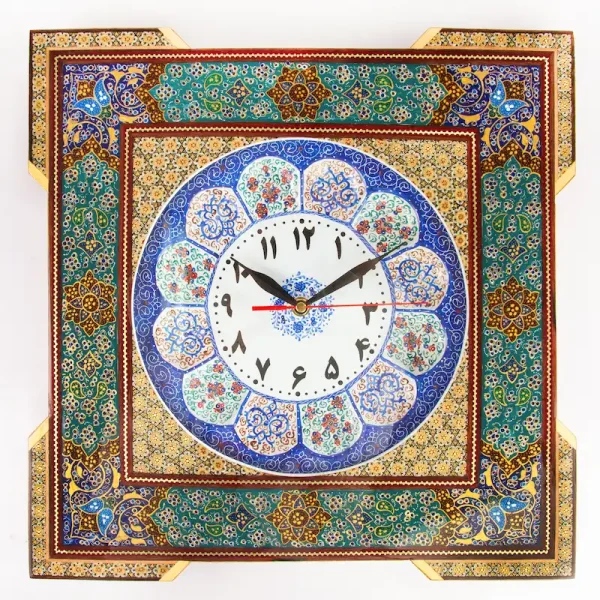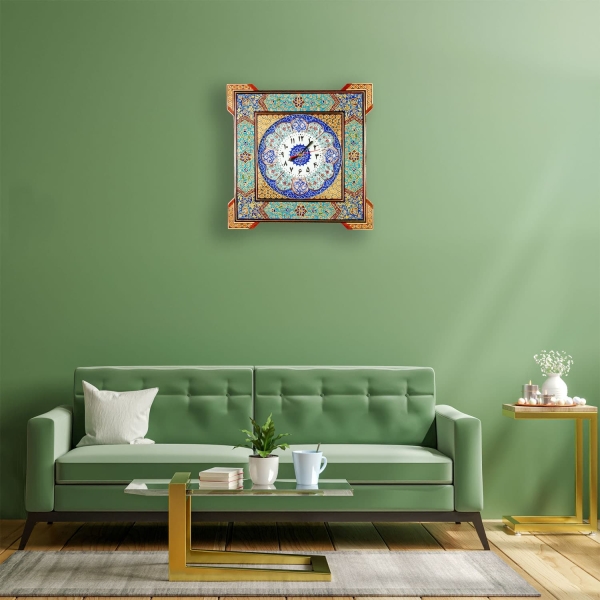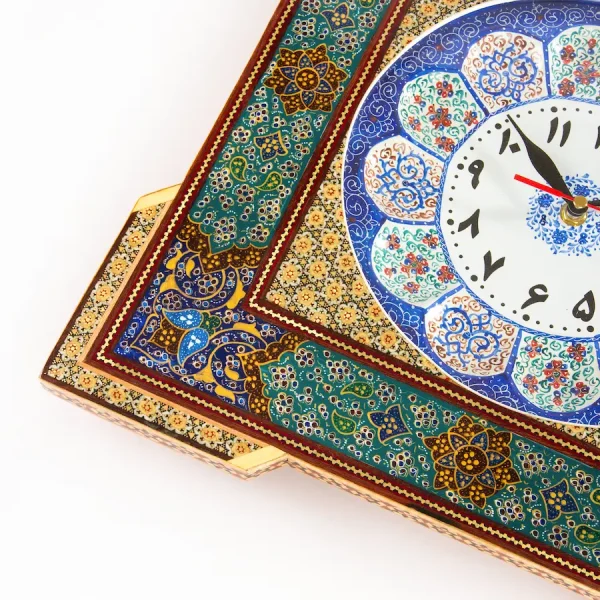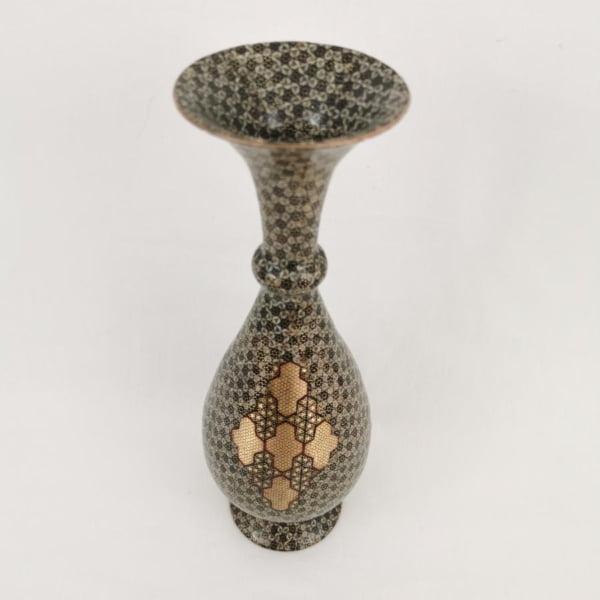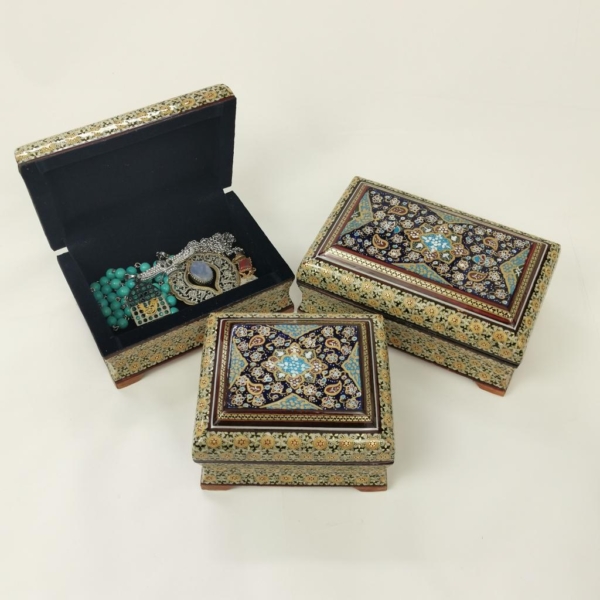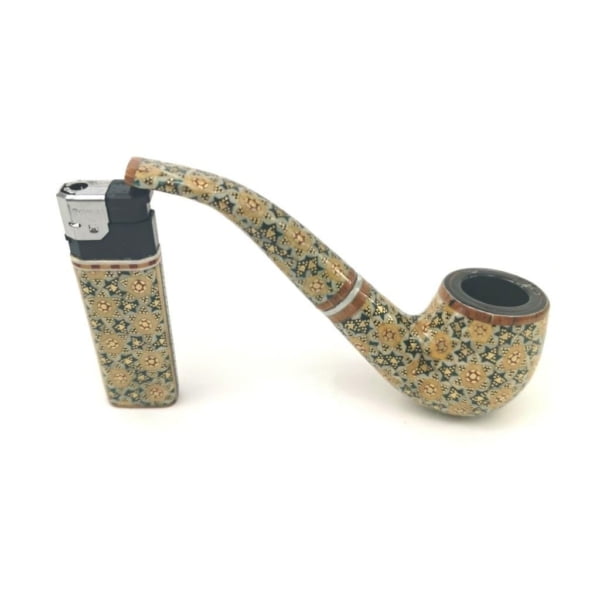Khatam Kari

At Persis Collection, we are delighted to present the finest selection of Persian Khatam Kari (in Persian: خاتمکاری, pronounced as "Khatam Kari"). This ancient art, also known as Persian marquetry, showcases the intricate craftsmanship and rich cultural heritage of Iran.
Chovgan Khatam Kari Jewellery Boxes
Original price was: $76.80.$61.44Current price is: $61.44.Add to cartTazhib Jewellery Boxes Khatam Kari Art
$25.60 – $40.96Select options This product has multiple variants. The options may be chosen on the product pageX Large Tazhib Star Khatam Kari Jewellery Box 31 x 22cm
Original price was: $125.44.$87.04Current price is: $87.04.Add to cartKhatam Card Deck Box
$20.48 – $21.76Select options This product has multiple variants. The options may be chosen on the product pageKhatam Jewelry or Pencil Box
$25.60 – $30.72Select options This product has multiple variants. The options may be chosen on the product pageKhatam Tazhib Pen Holder
$25.60 – $48.64Select options This product has multiple variants. The options may be chosen on the product pageKhatam Pen Holder
$12.80 – $48.64Select options This product has multiple variants. The options may be chosen on the product pageThe Timeless Art of Khatam Kari
What is Khatam Kari? Understanding the Craft
Khatam Kari (in Persian: خاتمکاری, pronounced as “Khatam Kari”) is a traditional Persian art form that involves creating intricate geometric patterns using small, colored pieces of wood, bone, and metal. These patterns are meticulously arranged and inlaid on surfaces such as Khatam Kari boxes, frames, and furniture, resulting in stunning Home decor items. The craft dates back centuries and is deeply rooted in Persian culture, where it has evolved to include a wide range of products, from Khatam Kari jewelry boxes to Persian Khatam backgammon sets.
Khatam Kari Process
The process of Khatam inlay work is both complex and time-consuming. Artisans first prepare the raw materials, including wood from trees like walnut, ebony, and jujube, as well as bone and metal wires made of brass or silver. These materials are cut into tiny, precise shapes, often triangles, which are then arranged into elaborate mosaic patterns. The assembled pieces are glued together, pressed, and polished to create a smooth, refined surface. The result is a beautiful, durable item that embodies the rich tradition of Persian Khatam Kari.
The Evolution of Khatam Kari: A Journey Through Time
The history of Khatam Kari is as intricate as the craft itself. This art form emerged during the early Islamic period in Iran, with evidence of its practice dating back over a thousand years. The oldest surviving Khatam piece is the pulpit of the Atiq Mosque in Shiraz, which showcases the skill and artistry of Persian craftsmen from centuries ago.
History of Persian Khatam Kari
Khatam Kari flourished during the Safavid period, particularly under the reign of Shah Abbas the Great, who was a great patron of the arts. During this era, Khatam Kari was used extensively to decorate royal palaces, mosques, and other significant structures. The period also saw the development of the Golbandi technique, where tiny triangular prisms were used to create intricate floral designs, enhancing the beauty and complexity of Khatam Kari’s works.
Persian Khatam Kari in Qajar Era
The craft continued to evolve through the Qajar period, where despite some decline in material quality, innovations were introduced, such as the fusion of Khatam with marquetry. This era also saw the introduction of new geometric patterns and design motifs, further enriching the art form. Today, Khatam Kari remains a celebrated art, with Isfahan being the primary center for its production.
The Process Behind Persian Khatam Kari: From Raw Materials to Masterpieces
The creation of Khatam Kari involves a meticulous process that demands precision and patience. The first step is the selection and preparation of raw materials. Wood from trees such as walnut, ebony, and jujube, as well as bones and metal wires, are essential components. The wood is cut into thin strips, often about 60 cm in height, and allowed to dry thoroughly. For high-quality Khatam Kari, bone strips, such as those made from camel bone, are soaked in lime water for several months to achieve the desired whiteness.
Once the materials are prepared, they are cut into tiny, precise shapes, typically triangles, known as “sheesh.” These pieces are then meticulously arranged into intricate, colorful patterns, often forming mosaic-like designs. The arrangement of these pieces is a critical step, as the precision and symmetry of the pattern significantly impact the final aesthetic of the Khatam work.
After the pattern is assembled, the pieces are glued together using a special adhesive, pressed to ensure they bond tightly, and then polished to create a smooth, lustrous surface. The finished Khatam piece is a testament to the artisan’s skill and creativity, combining traditional techniques with a modern touch.
The Versatility of Khatam Kari: A Craft for Every Occasion
Khatam Kari is a versatile art form that can be applied to a wide range of objects, making it suitable for various occasions. Traditionally, Khatam Kari was used to decorate items in royal households, such as picture frames, mirrors, and furniture. Today, it is used to create a diverse array of products, from Khatam Kari jewelry boxes and chessboards to Persian Khatam picture frames and backgammon sets.
Persian Khatam Kari Decorative Items
These items are not only decorative but also functional, making them perfect for everyday use or special occasions. For example, Khatam Kari boxes are ideal for storing jewelry or keepsakes, while Khatam mirrors and frames add an elegant touch to any room. Persian Khatam items are also popular choices for corporate gifts, thanks to their cultural significance and timeless beauty. Organizations often use Khatam Kari products as executive gifts, presenting them to guests, clients, or employees as a symbol of appreciation and respect.
The Significance of Khatam Kari in Persian Culture
Khatam Kari is not just an art form; it is a symbol of Persian cultural identity and craftsmanship. Each piece of Khatam reflects the rich history and tradition of Persian art, embodying the values of precision, beauty, and creativity that have been passed down through generations. The meticulous process of creating Khatam Kari pieces also reflects the patience and dedication of the artisans, who spend countless hours perfecting their craft.
The Usage of Khatam Kari
In Persian culture, Khatam Kari is often associated with elegance and refinement. It is used to decorate important religious sites, royal palaces, and cultural landmarks, showcasing the significance of this art form in Persian history. The continued popularity of Khatam Kari today, both in Iran and abroad, is a testament to its enduring appeal and cultural importance.
Caring for Your Khatam Kari Items: Tips for Longevity
To preserve the beauty and integrity of your Khatam Kari items, proper care is essential. Khatam Kari pieces are sensitive to heat, moisture, and direct sunlight, which can cause the inlay to warp or peel over time. To prevent damage, keep your Khatam Kari items in a cool, dry place, away from windows or sources of heat.
With proper care, your Khatam Kari items will remain beautiful and vibrant for years to come, serving as a lasting reminder of Persian artistry and craftsmanship.
The Intricate Beauty of Khatam Kari
Immerse yourself in the intricate beauty of Persian Khatam Kari, a traditional Persian art form that combines wood, essence, and bone inlays to produce stunning geometric patterns. Dating back to the Safavid period, Khatam Kari is a testament to the rich artistic heritage and professed artificer of Iranian crafters. Each piece of this elegant Persian Marquetry, whether it’s an ornamental box, an elegant frame, or a detailed glass, showcases the tolerance and perfection needed to produce these masterpieces. Discover further about Persian Marquetry, this fascinating art form, and see the scrupulous process behind it by watching our featured videotape. Enhance your home with the dateless fineness of our Khatam Kari collection.
Khatam Kari FAQ:
- What is Khatam Kari?
Khatam Kari is a traditional Persian art form that involves inlaying small pieces of wood, bone, and metal into intricate geometric patterns on various objects. - Where did Khatam Kari originate?
Khatam Kari is believed to have originated in Shiraz, Iran, but it flourished in Isfahan, where it became a prominent craft during the Safavid period. - What materials are used in Khatam Kari?
Khatam Kari typically uses wood (like walnut and ebony), bone, and metal wires (usually brass or silver). High-quality pieces may also include ivory and gold. - How is Khatam Kari made?
Khatam Kari involves cutting materials into small, precise shapes and arranging them into intricate patterns. These pieces are glued together, pressed, and polished to create a smooth, decorative surface. - 5. What are the common uses of Khatam Kari?
Khatam Kari is used to decorate items such as jewelry boxes, picture frames, mirrors, chessboards, and office accessories. It is also popular in executive gift sets. - How can I identify a high-quality Khatam Kari piece?
High-quality Khatam Kari features precise, symmetrical patterns, fine and delicate inlays, and smooth, polished surfaces. The use of premium materials like ebony and ivory also indicates a higher quality. - Where can I buy authentic Persian Khatam Kari?
You can purchase authentic Persian Khatam Kari from reputable online galleries like Persis Collection, which offers a wide range of Khatam products with worldwide delivery. - What is the history of Khatam Kari?
Khatam Kari has a history that dates back over a thousand years, with significant developments during the Safavid period. It remains a celebrated art form in Iran today. - Are Khatam Kari items suitable as gifts?
Yes, Khatam Kari items make excellent gifts due to their beauty and cultural significance. They are often used as corporate gifts and special occasion presents. - How should I care for my Khatam Kari item?
To maintain the beauty of your Khatam Kari item, keep it away from direct sunlight, moisture, and extreme temperatures. Clean it gently with a soft cloth to preserve its finish.

 Love Calligraphy Mirror 40 x 30cm
Love Calligraphy Mirror 40 x 30cm 









